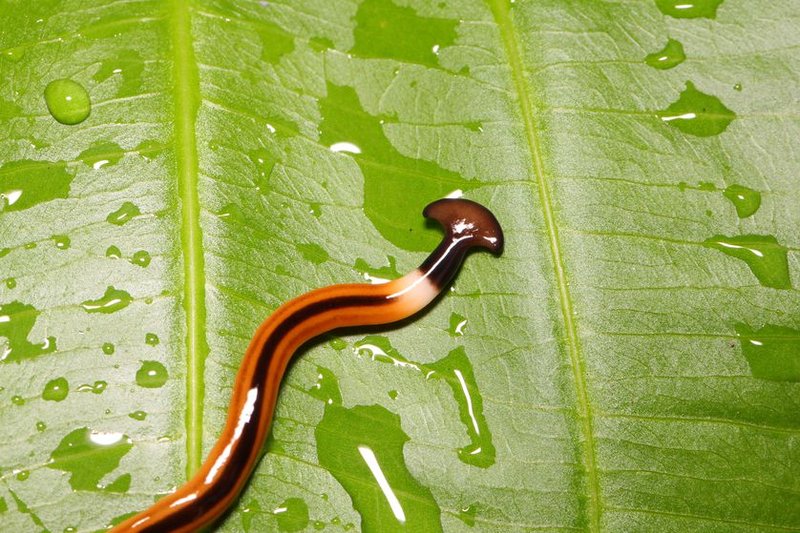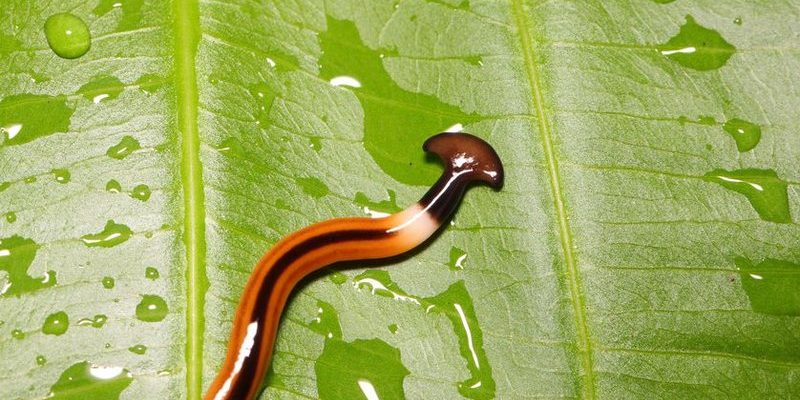
Honestly, the discussion around hammerhead worms is a bit like the classic debate over pineapple on pizza—there are strong opinions on both sides. Some folks argue that these worms are harmful, while others see them as part of a complex ecosystem that could even help certain types of soil. Let me explain what these worms are really about and how they might affect your garden.
What Are Hammerhead Worms?
Hammerhead worms, scientifically known as **Bipalium**, are a type of flatworm. They’re usually found in tropical and subtropical regions, but they’ve been spotted in various places around the world. They can grow up to 12 inches long and have a unique head shape that sets them apart from other worms.
What makes them truly fascinating is their ability to move. Unlike earthworms that burrow, hammerhead worms glide across surfaces, using a slime trail to help them navigate. This can make them a bit tricky to spot at first, but if you see one, you’ll recognize it by its distinctive hammer-shaped head—definitely not your everyday worm!
Many people notice these worms after a rainstorm when they come out seeking food. Hammerhead worms are carnivorous, mainly feeding on other worms, which might raise some red flags for gardeners. This is one of the primary reasons why they are often viewed as a threat to soil health.
How Do Hammerhead Worms Affect Soil Health?
You might be asking, “So, are hammerhead worms bad for my soil?” The answer isn’t quite black and white. **Soil health** is influenced by many factors, including the organisms living within it.
On one hand, hammerhead worms can negatively impact soil health because they prey on beneficial earthworms. Earthworms are known as “nature’s plow,” helping aerate the soil and break down organic matter. If hammerhead worms significantly reduce the population of these beneficial worms, it could lead to poor soil structure and nutrient availability.
On the other hand, hammerhead worms are part of a larger food web. They play a role in controlling the populations of certain pests and may even help break down decaying matter in the soil. This dual nature makes them a complicated addition to the soil ecosystem.
Identifying Hammerhead Worms
If you’re keen on keeping your garden thriving, knowing how to identify hammerhead worms is key. They’re typically **brown or gray** with a broad, flattened head that often has a distinct color pattern.
To make identification easier, consider these features:
- Head Shape: Look out for that flat, hammer-like head.
- Body Color: Most hammerhead worms are brown, gray, or a mix.
- Size: They can grow quite large, sometimes up to a foot long.
- Movement: They glide rather than crawl, leaving a slimy trail.
If you’re still unsure, take a photo and do a quick online search or ask fellow gardeners. The more you know, the better equipped you’ll be to handle them if they show up in your garden.
Are Hammerhead Worms Harmful to Plants?
Plants rely on a healthy soil ecosystem to thrive. Given that hammerhead worms feast on earthworms, their presence can indirectly affect plant health. **Less earthworm activity** can lead to less aeration and poorer drainage, ultimately affecting how well plants grow.
However, hammerhead worms don’t typically eat plant roots. Instead, they focus on their prey—earthworms. So while they might be harmful in terms of soil health, they aren’t directly harmful to your plants in the same way that, say, caterpillars can be. It’s a nuanced relationship with the potential for both harm and benefit.
Managing Hammerhead Worms in Your Garden
If you find yourself playing host to hammerhead worms, it’s essential to approach the situation carefully. Here are some tips on how to manage them without throwing a wrench in your garden’s ecosystem:
1. **Identify and Monitor**: Keep an eye on their population. If you see a few, it’s not necessarily time to panic. A small number may not have a significant impact.
2. **Encourage Beneficial Worms**: Create conditions that favor earthworms, such as adding organic matter like compost. This can help bolster their population and counteract the hammerhead worms.
3. **Hand Removal**: If hammerhead worms become too numerous, you can remove them by hand. Just make sure to wear gloves, as they can produce a slime that is irritative.
4. **Natural Predators**: Birds and other wildlife can help control the hammerhead worm population. You can attract these animals to your garden by providing food sources and safe resting spots.
So, are hammerhead worms beneficial or harmful? The truth is, it’s all about balance. While they may pose a risk to beneficial earthworms, they also play a role in the broader ecosystem. By understanding their impact and taking the right steps, you can maintain a thriving, healthy garden.
Gardening is a journey, and like any journey, it’s filled with surprises—like discovering hammerhead worms. Remember, a healthy garden isn’t just about the plants; it’s also about the rich community of organisms living in the soil. Keep learning, stay curious, and you’ll find your way to a flourishing garden!

